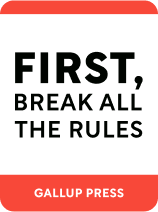

This article is an excerpt from the Shortform book guide to "First, Break All the Rules" by Gallup Press. Shortform has the world's best summaries and analyses of books you should be reading.
Like this article? Sign up for a free trial here .
How do you find an ideal employee to fit the position that you need filled? What traits and talents would your ideal employee have?
It’s not easy to find the ideal fit for a job, especially during the hiring process. While you can’t change the way people present themselves, you can clearly define the talents that describe the ideal worker for the position you’re trying to fill.
Think about the following tips as you’re creating your ideal employee profile.
How to Find the Employee of Your Dreams
Hiring the ideal employee is an ambitious task to embark upon. There are two reasons for this:
- Most people can’t identify their own talents. This makes it difficult for you to figure out where their talents lie before you get to know them.
- Most people are on their best behavior during an interview process. They will say what they think they need to say to get the job they’re applying for, even if they’re brushing over or coloring certain talents. For example, instead of saying they don’t trust people, they may say that they have a talent for “healthy cynicism.”
Tip #1: Think About the Structure of Your Company
The talents associated with any given role will change based on the way your company is run. This is because your expectations and the way you interact with the person in that position are both unique to your organization.
For example, two companies are searching for a sales representative. Company A enforces strict procedures but encourages cooperation with fellow reps. On the other hand, Company B gives its employees the freedom to work any way they want but puts them in competition with their fellow reps. The ideal employee for Company A would have talents such as organization, attention to detail, and cooperation. However, the ideal employee for Company B would have talents such as creativity, flexibility, and competition.
Tip #2: Think About Your Current Team Members
Consider what talents you can add to your team to increase performance. Make sure that the people you hire have the appropriate talents to interact with your team effectively.
For example, you’re looking for someone to join your marketing team. You know that your current team has a talent for assertiveness but doesn’t always think before they act. With this information in mind, you conclude that an ideal candidate would be assertive but would also have a talent such as critical thinking or patience to force the team to think through their choices before they make them.
Tip #3: Think About the Three Types of Talent
Trying to come up with a list of talents can become overwhelming. When determining the proper talents for a role, start by choosing one talent for each of the three types of talent: striving, thinking, and relating.
For example, if you’re looking for an executive assistant, you may want someone who has the striving talent of service, the thinking talent of organization, and the relating talent of remembering names. Someone with this combination of talents would excel in the role and offer you the assistance you need.
Tip #4: Look at Your Best Employees
When coming up with your list of talents, think about the best employee you’ve ever had in that role or a closely related role. Then, consider the talents that they possess that allow them to succeed. Use these talents to inform your search.
For example, you’re looking for a new marketing associate to join your non-profit organization. You know that the best employee you’ve ever had in the position possessed the striving talent of fulfilling a mission, the thinking talent of focus, and the relating talent of empathy. You use this knowledge to inform the way that you guide your decision-making process.
Tip #5: Don’t Look at Your Worst Employees
Many managers try to look at their worst employees to find qualities that they want to avoid when looking through candidates. However, bad employees and good employees often share many of the same qualities. It’s how they use those qualities that make a difference. If you look at your worst employees to find qualities to avoid, you may actually be overlooking things that would benefit your company when paired with the right talents.
For example, a great teacher and a bad teacher may share a talent for confrontation. The difference is that the great teacher also has the relating talent of empathy and knows when to support a student instead of confronting them. On the other hand, the bad teacher lacks a talent for empathy and confronts students at inappropriate times. If you only look at the bad teacher, you may avoid candidates with a talent for confrontation or aggression. However, as the great teacher proves, these proficiencies can be valuable when paired with other talents.

———End of Preview———
Like what you just read? Read the rest of the world's best book summary and analysis of Gallup Press's "First, Break All the Rules" at Shortform .
Here's what you'll find in our full First, Break All the Rules summary :
- Why only 13% of the world’s workforce is actively engaged at work
- How to find strong employees and keep them
- The 12 questions to ask your employees that help you determine the strength of your organization






